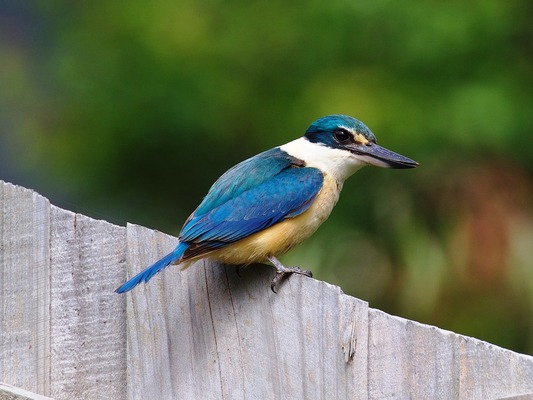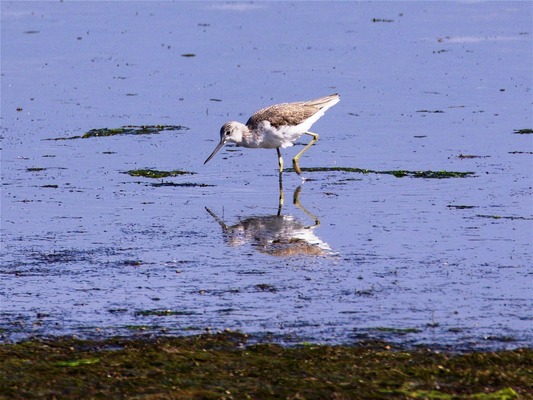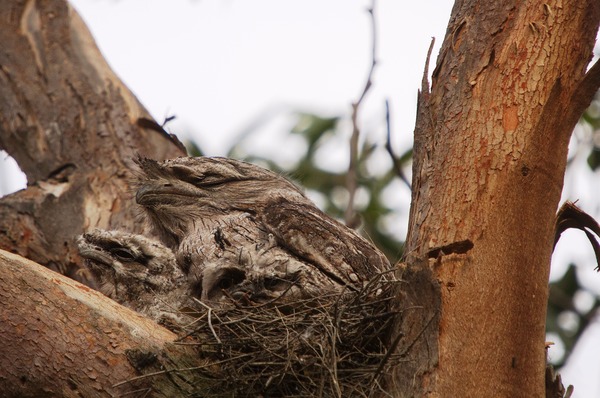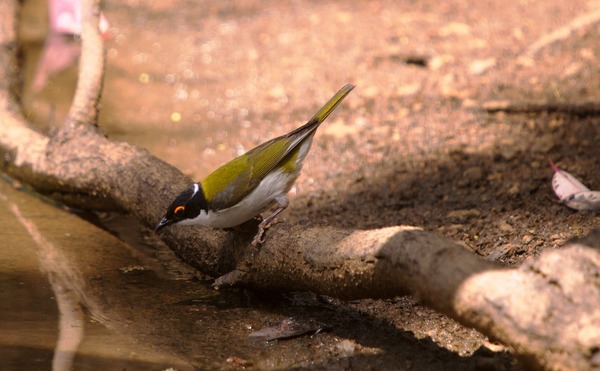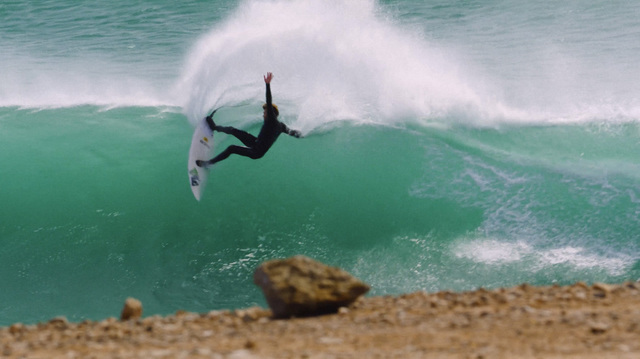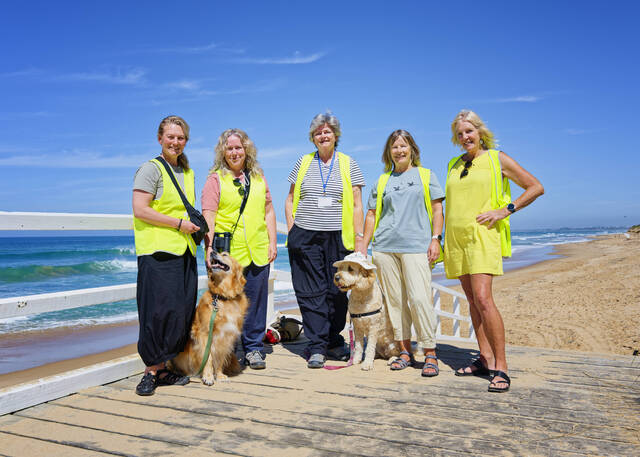Spring has been in full swing, which means that birdwatching has been in full swing.
The red-rumped parrots in my garden have a few young in their nest, and I hope that our King Charles spaniel, Max, keeps well away from the fledglings this year.
Speaking of the dogs, I put the family dogs in my front garden while I mopped the floors last week (a woman’s work is never done). When I popped the dogs inside I saw a tiny juvenile New Holland honeyeater on the top of a shrub, and it was shaking like a leaf. I thought to myself that there was no way that this young bird could fly, and I thought that it had fallen out of the nest, but I couldn’t see an obvious nest in the vicinity. The parent birds were around so I went inside and watched out the window, and sure enough after around 10 minutes the gutsy little bird took off and flew into the next shrub. I was so relieved that the dogs had not killed it, and needless to say they have not been in the front garden since.
I’ve had a few great outings over the past few weeks.
I had a quick drive through Western Treatment Plant, and tried very hard to take a decent photo of the two glossy ibis that were in the crake pond at T-section lagoons. These beautiful birds were so hard to photograph, and wouldn’t let me get anywhere near them, which is fine and challenging. I did see spotted crakes, Baillon’s crakes, brolga, Cape Barren geese, red-kneed dotterels, sharp-tailed sandpipers, red-necked stints and once again, lots of whiskered terns.
I had to pick my daughter up from school at Drysdale on 19 October, and happened to drive down Anderson Road near Swan Bay. In the bare trees next to the road I noticed two pallid cuckoos, several Horsfield’s bronze cuckoos, black-faced cuckoo-shrikes and a small flock of 10 white-browed woodswallows.
White-browed woodswallows are a small, dark, pretty bird with a distinctive white eyebrow. The face and chin are black, and the upperparts are deep blue grey. Females are duller than males, with a browner body and pink to fawn underparts.
I was fortunate to have been out and about on a day when the woodswallows were moving through the Bellarine in large numbers, as these birds are nomadic in that they move north in autumn and south in spring. When I looked at the bird observations for that day on the Geelong Field Naturalists website, there were 8800 white-browed woodswallows seen in Newtown and 12,000 seen in Yellow Gums Estate in Ocean Grove, so they were certainly moving in very large numbers.
A few days after this I stopped at Rice Reserve in Connewarre for a quick look around on my way to work, essentially to attempt to take a better photo of a white-browed woodswallow for this article. I didn’t see a W-BW, but to my surprise I did spot a small black and white bird, which I initially thought at first glance was a magpie-lark. On closer inspection I realised it was not a magpie-lark, but it was definitely a white-winged triller, a bird that I’d seen a lot of during my recent trip to Darwin.
In my surprise at seeing a triller down here I didn’t take a photo, then I lost the bird in the dense foliage, and in looking for it I was almost late for work. I don’t think that the boss would be impressed at my ’looking for a triller’ excuse for being late.
The white-winged triller is a breeding migrant to southern Australia in summer (August to March). It spends winter in the inland and northern Australia and may also do so in Papua New Guinea and Indonesia. It is seen in the north of Australia throughout the year.
Speaking of birds that are moving through this area, I did finally see a scarlet honeyeater last week, thanks to Denis and Tom. Voice reader Lynn saw a scarlet honeyeater in her garden in the beginning of October, and since then these beautiful birds have been seen in the Ocean Grove Nature Reserve, Wallington, Leopold, suburbs of Melbourne, and regional areas such a Castlemaine, Lake Eildon, and Phillip Island.
The usual range for Scarlet Honeyeaters when they migrate south in the summer, is along the east coast of Australia from Cooktown in Queensland to Gippsland in Victoria, so they have moved further west in Victoria this year for some reason. I’m very happy that they have been seen around this region, as they are beautiful little birds, especially the male bird. They are a challenge to photograph, but I did manage a good view of a male in the garden belonging to Sue and Darren in Wallington – and I want to thank them for allowing bird enthusiasts on to their property to look at their ’rare’ bird!
Speaking of a ’rare bird’ I was at home looking after my daughter who has Year 12 exams looming, when the phone rang and it was Tom, who was looking at a Australian owlet nightjar peeking out of a tree hollow in Bannockburn. Tom and Gordon often go to Bannockburn and they knew how keen I was to lay eyes on an owlet nightjar. Forunately, my daughter was very understanding when I stopped looking after her and drove to Bannockburn because of an owlet nightjar emergency, but by the time I arrived there the bird had decided to hide and did not show itself!
It was lovely of Tom and Gordon to think of me, and one day I will see one!
At Bannockburn I did see several sacred kingfishers, yellow-faced honeyeaters, white-naped honeyeaters and and a lovely golden whistler, so it was great to check out Bannockburn bush.
I have to thank John and Andy and families for keeping me in touch with the tawny frogmouths that have nested on their properties this year. I’ve loved seeing them and watching the youngsters fledge. I also have to thank Jan for keeping an eye on the tawny frogmouths that nest in her local park. They are certainly very impressive and photogenic birds and they are such wonderful parents to their young, so they are great to observe.
Kevin has sent me an fantastic image of a sacred kingfisher that he has seen a few times at Blue Waters Lake, and also a photo of a common greenshank taken near Queenscliff. Kevin’s photos are superb and I thank him for his enthusiasm for birds and his wonderful photography.
Enjoy the warmer weather and the scarlet honeyeaters (and if you are late for work after seeing a triller I hope your boss is understanding).
– Jen Carr, jennifer.carr6@bigpond.com
Peak season for spotters
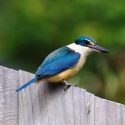
Digital Editions

-

Rust-eze claims Monday Women’s Section 1 title
It was grand-final week for Monday Women’s Section 1, which had been close at the top of the table all season. With a bye thrown…

